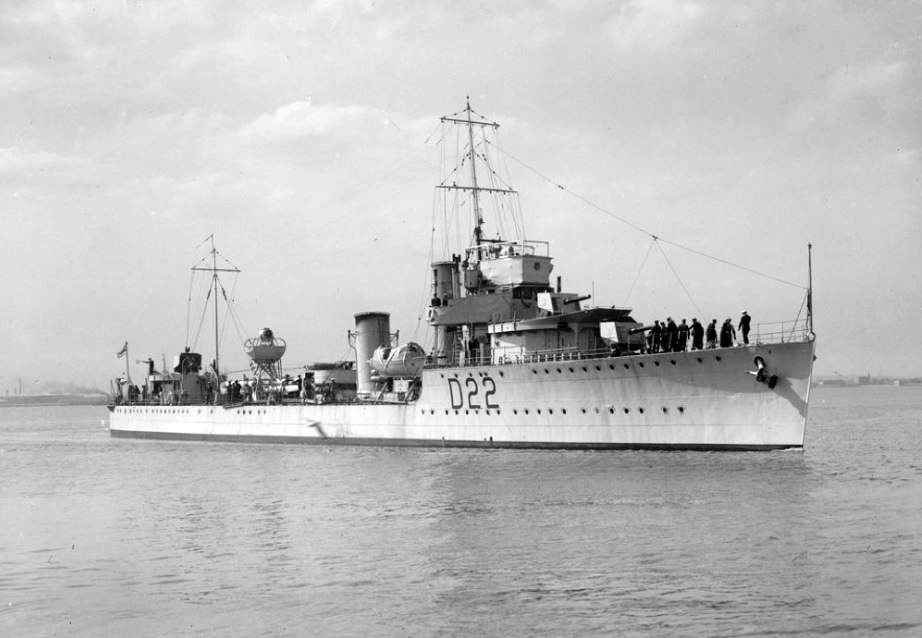HMAS Waterhen
From Our Contribution
Remarks
In 1933 the British Admiralty loaned Waterhen and four other ships to Australia to replace five being withdrawn from service. They were to become famous as the 'Scrap Iron Flotilla'. They arrived in Australia at the end of 1933, and HMAS Waterhen was active until 9 Oct 1934 when she was paid off in Sydney. Recommissioned again on 14 Apr 1936 for service in Australian waters she was again paid off on 1 Jun 1938.
With the outbreak of war she was recommissioned a third time on 1 Sep 1939, and carried out early anti-submarine patrols based on Sydney. Along with HMAS Stuart and HMAS Vendetta she departed for Singapore. "HMAS Vampire and HMAS Voyager sailed from Fremantle to join them. The Flotilla then sailed for Malta in the Mediterranean where they were to be based as the 19th Destroyer Division. Early on they saw little hostile activity due to British and French control of the sea. They were to combine with four British destroyers to form the 10th Destroyer Flotilla.
With the entry of Italy into the war, and the defeat of the French, the Mediterranean went from being totally controlled to a very hostile environment with most of the coastline in enemy hands. The Italians had a large naval fleet, and the French fleet had in effect changed sides. German use of Stuka dive bombers also made life for ships very difficult. For more than a year the 'Scrap Iron Flotilla' took part in the struggle for possession of the ancient sea route linking east and west HMAS Waterhen was almost constantly at sea, either operating with the fleet or on escort and patrol duties. She also carried out bombardment duties on the African coast during 1940 as a member of the 'Inshore Squadron'.
On Christmas night 1940 she sank an Italian supply vessel, but was forced on 30 Dec 1940 to proceed to Port Tewfik for major repairs lasting a month after colliding with and sinking HMS Bandolero an anti-submarine trawler. In March 1941 she ventured into the Aegean Sea, but returned in April and was again engaged in bombardment tasks in support of troops ashore. She survived an attack by German dive bombers in Tobruk harbour on 14 Apr 1941, rescuing troops from a damaged hospital ship and carried them to Alexandria.
During the Greece and Crete debacle she escorted convoys going there, and carried out rescue missions to bring some of the men back. In May 1941, however, she was engaged in the 'Tobruk Ferry Service' supplying and reinforcing the Australian's surrounded in Tobruk by the German and Italian Armies. On 28 Jun 1941 she left Alexandria for Tobruk and late on the next day she was attacked by dive bombers. Although she was not hit direct, bombs landing nearby had holed her and immobilised her. No casualties were suffered, but the ships company and troops embarked had to be taken of by HMS Defender. Although there was an attempt to tow Waterhen, she rolled over and sank on 30 Jun 1941, he first Australian naval vessel lost during WW2.
Battle Honours
- Libya 1940-41
- Greece 1941
- Crete 1941
Crew members
- † Patrick John Kelly 14 April 1936 - 11 August 1937
